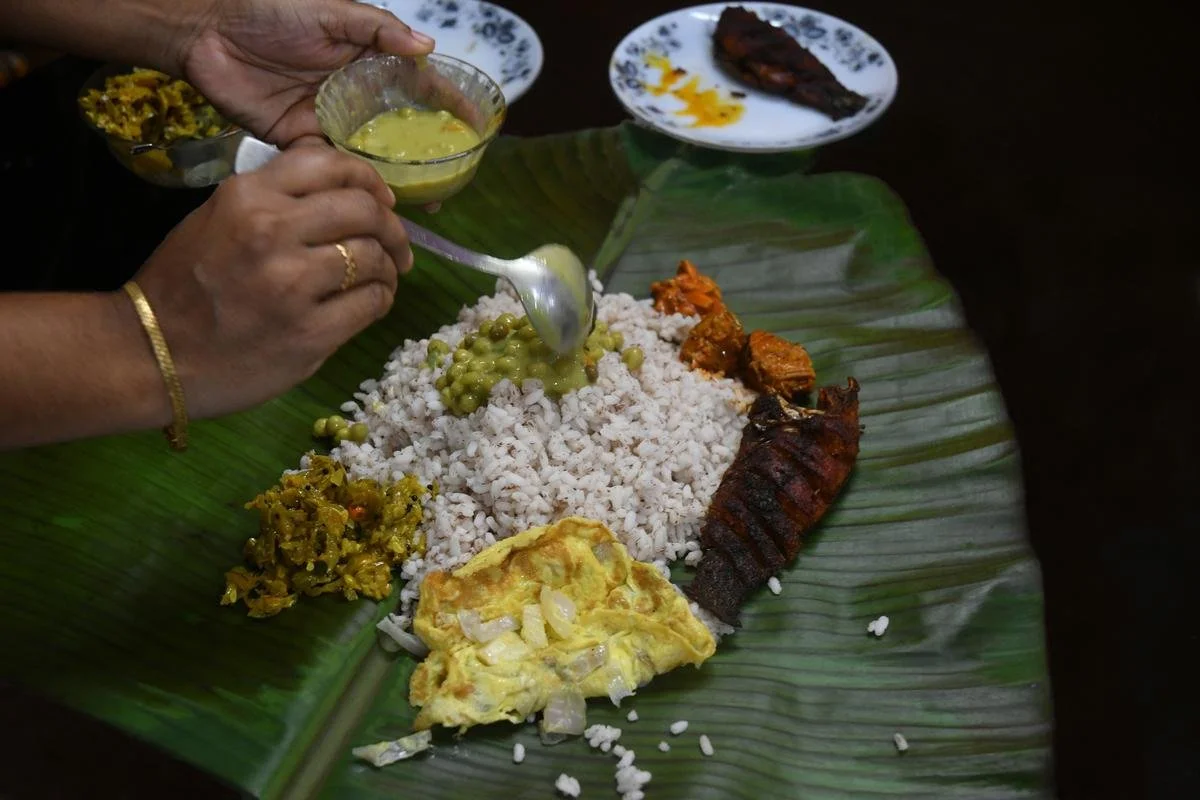Patrel: A Homecoming

Sana Javeri Kadri nurses a lingering sense of displacement between her two homes, in Oakland and Mumbai. And like for many Indians living abroad, it is food that offers a sense of home, even if home itself changes geography.
I wake up at 3AM dreaming of tamarind seeds again. I begin counting all the delicious foods that I grew up eating that have tamarind in them, until I can fall asleep again – I count Lakshmi's prawn curry, I count the tamarind candies on Jet Airways flights, I count the date tamarind chutney for pani puris, I count Neema tai's patrel. Counting sheep, diaspora edition.
The Muslim Ban is announced and I find myself unraveling. I quit my job and fly home to Mumbai on February 17th 2017. After seven years of living abroad, this was my first one-way ticket home. I left America because I had lost sight of why I was there, what idea of home I was even fighting for.
One of the first things I do when I return home is pester Neema tai, my grandmother's cook and the woman that feeds my entire family, into teaching me how to make patrel – colocassia leaves layered with spicy, sweet chickpea batter, rolled into a tight burrito, steamed until firm and then toasted in ghee – my most favorite Gujarati farsan.
She hitches up her sari, tied Maharashtrian-style between her legs, and begins vigorously mixing a handful of soaked, softened turmeric into a smooth batter – sweet jaggery, sour imli, bright yellow turmeric, a dash of red chili and a base of chickpea flour, all coming together in a gorgeous golden froth. The sound of the brass mixing bowl clanging against her bangles feels like the sound I've been waiting for, for years.
I am finally home, and yet, I surprise myself with a wave of homesickness for Oakland. Cooking in Neema tai's kitchen, in the home that I grew up in, is beautiful and precious, but it will always be neither here nor there. Every moment of nostalgia for here, will translate into an even deeper nostalgia for there. I left America because so many people had told me to go back to where I came from, because I was guilty of even having the privilege of a home to go back to, that I'd forgotten how to say, in six different languages, this is my home too.
Mumbai will always be my roots, and Neema tai's patrel will always taste like some kind of alchemy of motherland and ancestry. And I'm remembering, reminding myself, that America will always be my home, and tamarind candy will always taste like the bittersweet union of immigrant dream, brown-skinned reality, and a home worth fighting for.
Neema tai's Patrel (adapted from Tarla Dalal)
Makes 3-4 rolls
Ingredients
12 medium sized colocassia leaves
1 tsp mustard seeds
2 tsp sesame seeds
A pinch of asafoetida (hing)
2 tbsp coconut oil or ghee
For the Besan Mixture
2 1/2 cups besan (bengal gram flour)
1 tsp ginger-garlic-green chilli paste
1/2 tsp turmeric powder
1 tsp chilli powder
1/2 tsp asafoetida (hing)
3/4 cup grated jaggery
3 tbsp tamarind (softened in warm water)
Salt to taste
For Garnish
2 tbsp freshly grated coconut
2 tbsp finely chopped cilantro
Method
Cleaning and prepping the leaves
Place a colocassia leaf with the vein-side upwards on a clean, dry surface and remove the vein and stem entirely using a sharp knife. Be careful not to tear the leaf.
Clean the colocassia leaf on both the sides using a wet muslin cloth.
For the besan mixture
Combine all the ingredients together in a bowl, slowly add water, mixing with your hands or a whisk as you go until the jaggery melts and the mixture is smooth.
Be careful not to add too much water, you want the mixture to be thick.
Taste it, it should be sweet, salty and sour. If the taste of the flour is overpowering, add more seasoning.
To assemble
Place a colocassia leaf on a clean, flat surface with the de-veined side facing upwards and the tip of the leaf facing you.
Spread a little besan mixture evenly on the leaf using your fingers.
Layer another leaf over it, this time with the tip of the leaf in the opposite direction, pointing away from you. Again spread your besan mixture evenly over the leaf.
Repeat with four or five leaves total, depending on the size and thickness of your leaves.
Now, fold the leaves around 2” inward from both sides, left and right.
Once your ends are tucked in, roll your rectangle of layered leaves up tightly from top to bottom, applying your besan mixture into each fold or crevice. You should have a cylindrical roll of sorts, with besan mixture oozing out of everywhere.
Repeat this entire process with all your leaves, until you have 3-4 patrel rolls, ready to be steamed.
Place all the roll in a steamer and cook for 20 to 25 minutes or until they are firm.
Keep aside to cool completely for approx. 10 minutes. At this stage, you are welcome to stick your rolls in the freezer and save them for a dinner party, or future snack time.
If you'd like to eat them immediately - when cool, cut each cooked roll into 1/2 inch thick slices and keep aside.
Heat your oil of choice or ghee in a deep non-stick pan and add the mustard seeds.
When the seeds crackle, add the sesame seeds and asafoetida and sauté on a medium flame for a few seconds.
Add the patra pieces, being careful not to crowd your pan and cook on a medium flame until both sides are lightly browned.
Repeat with all your slices.
Garnish with coconut and cilantro. Serve!
Sana Javeri Kadri is a sometimes salty, permanently hungry, rather creative human. She was raised in post-colonial Bombay, wound up in the produce aisles of California and can be found @sanajaverikadri on Instagram or in person wherever there are vegetables to be found.
ALSO ON THE GOYA JOURNAL














